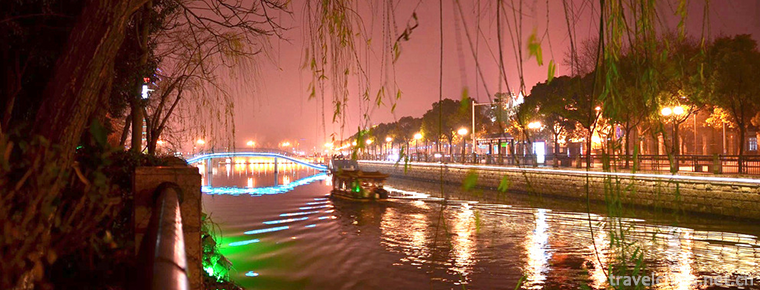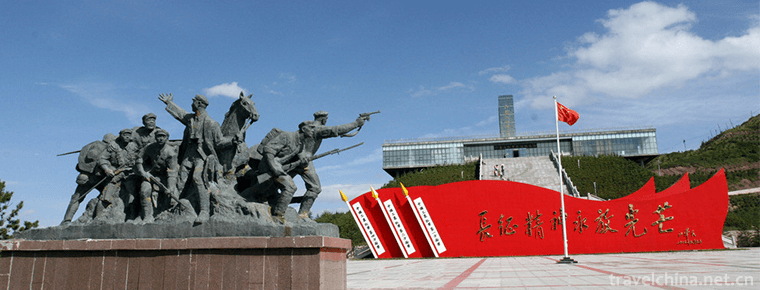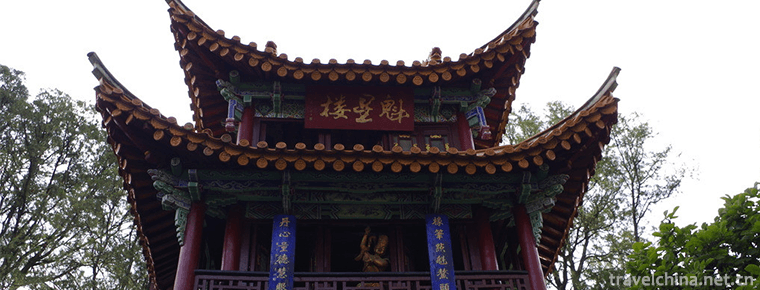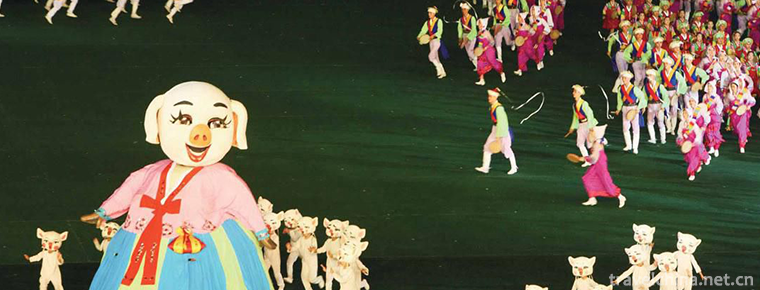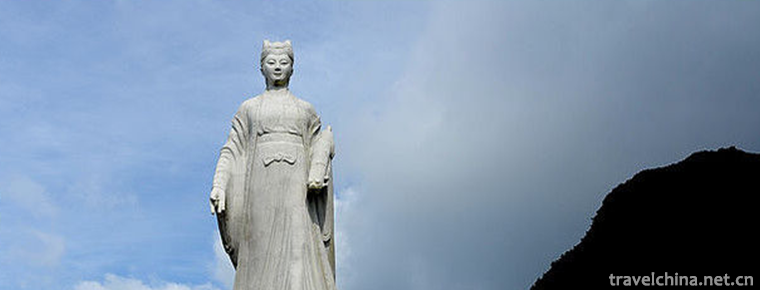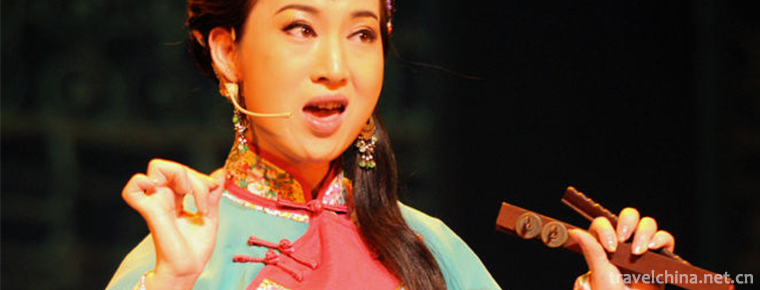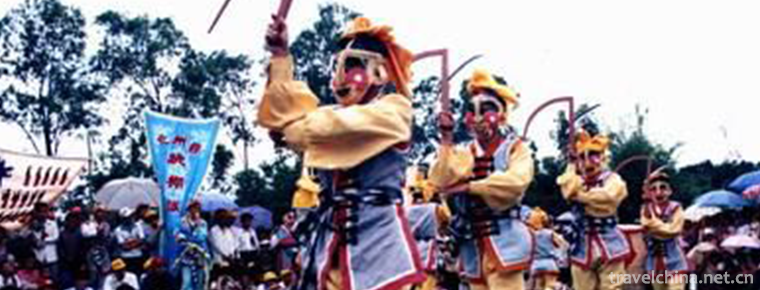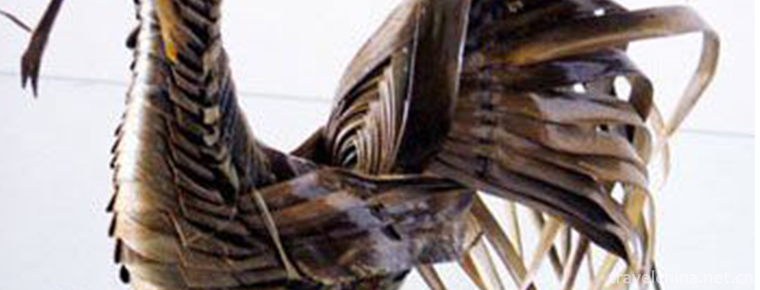Fuzhou national forest park
fuzhou national forest park
Fuzhou National Forest Park (also known as "Fuzhou Botanical Garden") is the first National Forest Park in Fujian Province, one of the ten National Forest parks, and one of the six 4A scenic spots in Fuzhou. Fuzhou National Forest Park, formerly known as Fuzhou Arboretum, was founded in February 1960 and approved by the Ministry of Forestry to establish Fuzhou Forest Park in 1988. The area is 859.33 hectares. It is divided into five parts: forest area, nursery, greenhouse, special garden and rest area.
On December 5, 2016, the State Tourism Administration announced that the 4A scenic spot of Fuzhou National Forest Park was criticized.
Location context
Fuzhou National Forest Park, formerly known as Fuzhou Arboretum, is a comprehensive park integrating scientific research and tourism. The area is 859.33 hectares. It is surrounded by mountains on three sides, facing water on one side, bounded by Fufei Road on the east, and bordered by Yeyang Village on the west, the dam on the North Bank of Bayi Reservoir on the south, and the Fuzhou Zoo on the other, Lingtou Township and Bijia Mountain on the north. It is rectangular and the highest point of Bijiashan is 643 meters above sea level. The lowest elevation of Yuannan Bayi Reservoir is only 47 meters. The business area is 860 hectares.
geographical environment
topographic features
The garden is surrounded by green hills on three sides, and the south is bordered by Lake 81. The terrain is high in the northwest and low in the southeast.
The soil parent rocks in the garden are mainly crystalline granite and tuff. The soil is mainly red soil. The soil profile shows strong acidity. The lower layer is red-brown or orange-red, and the bottom layer has red, yellow and white interlaced network layer. Most of the soil layers in mountainous areas are thin, with more surface gravel and less humus. Individual is stone soil, with a small amount of latent paddy soil distributed evenly. The drainage in forest parks is good, and the soluble salts in the soil are easy to be washed out, so the soil is generally acidic.
Climatic characteristics
Located in the northern edge of subtropical zone, the park has a subtropical marine climate with mild climate and abundant rainfall, with an average annual relative humidity of 79% and an average annual temperature of 20 C.
Resource situation
Resource characteristics
Fuzhou National Forest Park is affected by various natural conditions. Vegetation types are complex and varied. Vegetation is mostly distributed in flat areas of hills and valleys. There are two types of artificial forest and natural secondary forest, and some natural shrubs.
Resource classification
plant resources
There are many kinds of rare plants protected by the state, such as "living fossil" - Metasequoia glyptostroboides, "Chinese pigeon tree" - Davidia involucrata, a small number of "giants in the forest" - Wangtianshu. It is said that the Horizon Tree can grow up to more than 70 meters, people standing under the tree can not see the top of the tree. There are also the "Queen of the Tea Nationality" discovered only in 1960, the golden camellia and the world's oldest living fossil, the so-called ancient forest relics of the Alsophila spinulosa. As well as one of the world's famous giant trees, known as the "King of Ten Thousand Trees" of Taiwania flousiana. There are also many kinds of rare plants protected by the second class of national protection, such as Ginkgo biloba, Lianxiang tree, Putuo goose ear maple, Eucommia ulmoides, Baile tree, Xialamei, long-petaled short-column tea, Yunnan camellia, Hibiscus brown, Hainan coarse fir, litchi and so on.
tourist resources
Because of the geographical environment and forest protection effect, the park has formed a unique microclimate. It is warm in winter and cool in summer. The average temperature in summer is 3-5 degrees Celsius lower than that in Fuzhou. Forest releases a lot of oxygen and negative oxygen ions, which attracts many citizens to feel "forest bath", which is known as "the largest natural oxygen bar in Fuzhou". President Jiang Zehui of the Chinese Academy of Forestry Sciences kindly calls it "the lung of Fuzhou".
Main scenic spots
Bamboo Ornamental Garden
Bamboo ornamental garden is the most abundant collection of bamboo varieties in the garden. There are 226 species of bamboo, more than 50 species than the United Nations World Bamboo Research Center in Anji, Zhejiang Province, China. There are also five major scenic tree species in the world: Japanese golden pine, Chinese fir, cedar, moneysuckle, coastal Sequoia and three popular drinks in the world: coffee, cocoa and tea. In particular, the coastal sequoia, known as the "envoy of friendship" between China and the United States, is the second generation of the friendship tree given to the late Premier of the State Council Zhou Enlai by former President Nixon during his visit to China. In addition, there are four major street tree species in the world, namely, Platanus acerifolia, Elm, Aesculus chinensis, Tilia amurensis and ten famous traditional Chinese flowers (74 varieties of Camellia alone). The national flowers of many countries in the world, such as Hedgehog in Australia and Cherry Blossom in Japan, have also settled down here.
Tree Ornamental Area
In the tree ornamental area, more than 1700 species of trees introduced from home and abroad and 1000 species of plants protected in situ were used to construct special plant gardens in the past 40 years. The tree introduction area has been transformed into tree ornamental area, and eight special plant parks have been built, such as bamboo garden, rare botanical garden, palm garden, cycad garden, banyan landscape area, Fujian orchid garden, celebrity tree planting area and shade botanical garden (foothold fitness area). Bamboo Ornamental Garden collects more than 200 kinds of bamboo varieties from all over the country, which is one of the most complete bamboo plantations in East China. There are 22 kinds of Cycads in Cycad Garden, including 16 kinds at home and 6 kinds abroad, and the first-level protected plants at the national level. In the form of simulated ecosystem, trees, shrubs, rattan, Chinese herbal medicine, evergreen and deciduous trees are luxuriant in the garden, which makes people feel as if they are in tropical rain. Lin Zhong is a successful example of artificial imitation of ecological environment. More than 20 kinds of palm plants are gathered in the palm garden, and more than 30 kinds of banyan trees are collected and planted in the banyan landscape area, which is the most concentrated banyan garden in Fuzhou and even Fujian Province, and attracts many tourists from home and abroad. By building special botanical gardens, changing resource advantages into tourism advantages, strengthening tourism content and popular science education, good results have been achieved.
Humanistic Landscape Area
In the humanistic landscape area, Zhengxin Temple, which was built in Song Dynasty, adds the flavor of Buddhist culture to the park; Liu Bingru, son-in-law of Lin Zexu, is the tomb of a scholar, and is a regional cultural relic protection unit; the park opened Tianma Ling mountain climbing road, restored the ancient post road (Zhuangyuan Road) of Jinjing in Song Dynasty, connecting the park with Beifeng tourist area, and became the best place for citizens to climb, exercise and sightseeing.
Longtan Scenic Area
Located at the northernmost end of the park, Longtan Scenic Area is a typical scenic spot with the characteristics of South Asian tropical rain forest. The natural resources landscape, water landscape, Shidan landform landscape and human history landscape are rich in this region, which has high ecological tourism value.
Forest Museum
Fujian Forest Museum is the first special museum with forest as its theme in China. It was opened to the public on January 21, 2001. The exhibition of Fujian Forest Museum is divided into four parts. First, animal specimens, mainly 50 species of mammals, 41 species of reptiles, more than 200 species of birds, more than 500 species of butterflies. The second is plant specimens, including 29 species of sectional wood specimens, 50 species of laminated wood specimens, 20 species of amber specimens, 40 species of immersion specimens, and tree fossils (i.e. silicified wood). Thirdly, forest ecological landscape, mainly including the south subtropical rain forest ecological landscape in Nanjing, the mid-subtropical broad-leaved forest landscape in Wuyi Mountains, and the mangrove landscape in southern Fujian. Fourth, the Forestry Achievement Museum, focusing on "returning to nature", uses synchronous technology of electricity, sound, film and television. Its building area is 3850 square meters, with a total investment of more than 12 million yuan. It mainly uses physical objects, specimens, charts, models, multimedia and other means to show the formation, development of forests and the relationship between human beings and forests. The museum contains various exhibits such as the golden-spotted Phoenix butterfly. The exhibition combines scientific, artistic, ornamental and participatory elements. It fully reflects the diverse ecological types and abundant forest animal and plant resources of Fujian as well as the rich forestry industry. The achievements have become an important place and a new hotspot of tourism for forestry science popularization education.
World of Birds
Fuzhou Bird Language Forest, located in Fuzhou National Forest Park, covers an area of 25 mu. It is the only bird ecotourism attraction in Fujian Province. The park has collected more than 150 species of rare birds from all over the world, about 5000 birds, including more than 10 species of rare birds in the world and more than 20 species of rare birds in the country. It is the bird language forest with the most complete species, the largest number and the richest bird art performances in China.
Rare Botanical Garden
The rare botanical garden covers an area of 9 mu. It is planted in a simulated natural way. It combines tree and shrub, Chinese herbal medicine, evergreen and deciduous leaves. Hundreds of plants flourished in one garden, green and lush. It is a successful example of artificial simulation of ecosystem. Step into it, as if you were in the South Asia Tropical Rainforest, let you feel the strong atmosphere of the South Asia Tropical Rainforest. There are some national first-class protected plants such as Alsophila, Metasequoia, Pinus tabulaeformis and Taiwania flousiana in the garden. There are second-class national protected plants such as Torreya grandis and Eucommia ulmoides. There are also more than 30 countries and regions from North American sequoia, teak, Chinese fir, shellfish and other tree species. It has become an important refuge for rare and endangered plants and an important base for forestry science popularization in Fujian Province.
Transport line
Bus routes
Buses to Forest Park are 54, 72, 84, 87, 328 and 527.
Self-driving
(1) All the way north along Fufei Road, the Shangdouding viaduct can reach the east gate of the park .
(2) Turn left after arriving at the intersection of Xinyuan along Fufei Road to the north, and turn right after the entrance of Fuzhou Zoo along Xinyuan Road to the south entrance of the park through Cuihu Villa and a section of village road.
Three-day Tour to Fuzhou
Day 1: Fuzhou Forest Park, Fuzhou West Lake Park, Zuohai Park, Fuzhou Riverside Park, Jinniushan;
Day 2: Gushan, Yongquan Temple, Drinking Rock, Gushan Cliff Stone Carvings, Maweigang, Luoxing Pagoda;
Day 3: Yijin Fang, Guanglu Fang, Wenru Fang, Palace Lane, Tower Lane, Huang Lane, Anmin Lane, Langguan Lane, Jipi Lane and Yangqiao Lane.














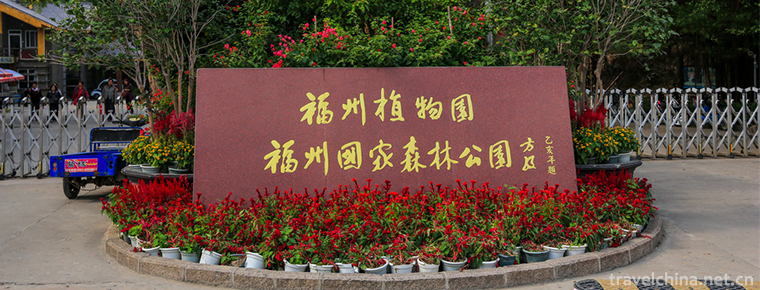
-
Hao River
Haohe River surrounds the old city of Nantong, like a gourd, like a Pearl chain, known as the "emerald necklace" of Nantong City. It is a national 5A tourist attraction..
Views: 189 Time 2018-12-06 -
Liupanshan National Forest Park
Liupanshan National Forest Park is located in the center of the triangle formed by Xi'an, Yinchuan and Lanzhou. It is located in the south of Ningxia. It spans two counties and one district in Jingyua.
Views: 121 Time 2018-12-24 -
Jindian Scenic Spot
Kunming Golden Palace Scenic Spot, also known as Tongwa Temple, is made of brass and shines in the sunshine, reflecting the golden brilliance of Cuigou Youlin.
Views: 161 Time 2019-01-22 -
Arirang
Alirang, known as Alirang Daling, is a famous Korean song and the most representative folk song on the Korean Peninsula. It is known as the "First National Anthem" and "National Songs&q.
Views: 162 Time 2019-03-28 -
Dark pass
Dark pass Dark Biography, as the first Creation Epic of the Han nationality, is represented by folk songs and songs. It began to circulate in the Ming and Qing Dynasties. .
Views: 316 Time 2019-05-03 -
Ma Xian Xing custom
The belief in Ma Xian is a traditional folk custom inherited from generation to generation by the people of Fujian and Zhejiang. Ma Xian, also known as Ma Xiaoxian, is a goddess worshipped in northeas.
Views: 383 Time 2019-05-16 -
The legend of Qiren worrying about heaven
On November 11, 2014, the legend of Qiren worrying about heaven was approved by the State Council to be included in the fourth batch of national intangible cultural heritage list..
Views: 267 Time 2019-06-10 -
Shangluo Flower Drum
Shangluo Flower Drum, also known as Flower Drum and Ground Bumper, is popular in 7 counties (districts) of Shangluo City, Shaanxi Province, especially in Shangzhou, Danfeng, Zhenan and Zhashui. During.
Views: 181 Time 2019-06-13 -
Shaoxing Lotus Flower Fall
Shaoxing Lotus Fall, also known as Lotus Music and Lotus Fall, is a traditional form of folk art in Shaoxing, Zhejiang Province. It is named because of the help singing such as "Lili Lianhua Luo&.
Views: 136 Time 2019-06-14 -
Flower hopping shed
Dancing Huapeng, introduced from Fujian in Ming Dynasty, is an ancient traditional folk dance, belonging to Nuo dance. It has a fixed "Keben" (singing desk book), which is divided into 18 br.
Views: 248 Time 2019-06-21 -
New brown leaf weaving
Xinfang Brown edition is one of the traditional handicraft products in China. It has entered the third batch of national intangible cultural heritage list recommendation project list. It originated in.
Views: 472 Time 2019-08-16 -
Neijiangs first industry
In 2019, the sown area of grain crops in Neijiang is 309600 ha, an increase of 0.3% over the previous year; the sown area of oil crops is 79900 ha, an increase of 0.4%; and the sown area of vegetables is 78100 ha, an increase of 2.3%. The total grain output .
Views: 298 Time 2020-12-16
